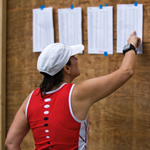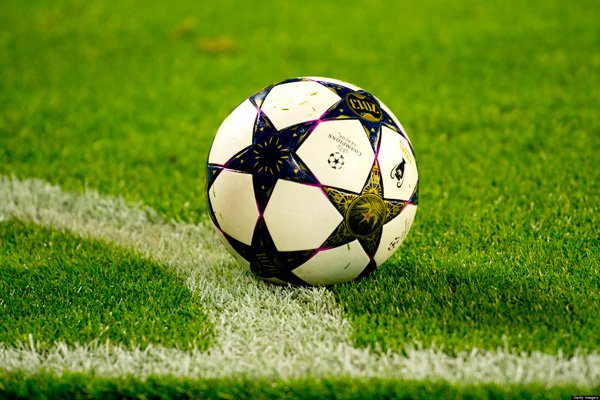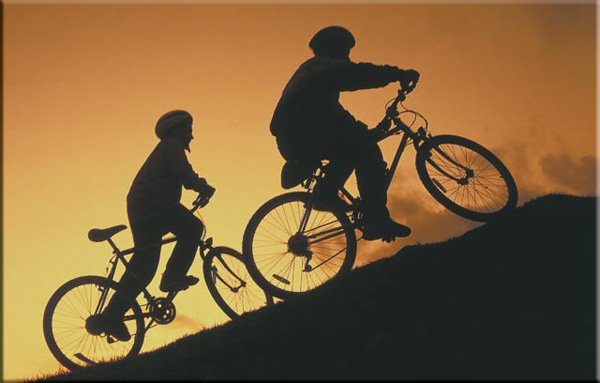
During a recent Masters meet at Ithaca College, I swam the slowest 1000-yard freestyle of my life. And it may have been as valuable a gift as any I've received from 45 years of competitive swimming. You see, it provided a new perspective that could lead to limitless enjoyment in swimming—and competing—over the next 30 or more years, should I have the good fortune to swim that long.
Perhaps the greatest challenge faced by Masters swimmers, at least after age 40, isn't the physical fight against the gradual slowing of one's times with age—it's being able to accept that inevitability with grace, and focus on all the positives that accompany being a goal-oriented athlete at a stage in life when many of your peers are easing off.
For over four decades, the 1000-yard swim has served as a key benchmark because I've swum it more often than any other race. Between 1968 and 1972, I swam it nearly 50 times in college dual meets. That familiarity drew me to it when I joined Masters at 38. It also had more emotional resonance for me than other races because, as a "mature" swimmer, being able to approach my college times was a great source of pride.
My lifetime record for the 1000 is 10:45, recorded in a dual meet in December 1970. But my speed that day was wildly improbable and even inexplicable. Most of my 1000-yard swims fell between 11 and 12 minutes, shaped like a bell curve across four years of college.
As a 17-year old freshman my best time was 11:59, after spending most of the season around 12:30.
At 18 and 19 I swam consistently around 11 minutes. As a 20-year old senior, slowed by fatigue from overtraining, my times slowed steadily. By season's end I sometimes struggled to break 12 minutes—a painful way to finish my once-promising swim career.
I began swimming again at age 38, after a 17-year layoff. During the next few years, I improved my 1000 times steadily from 12:00+ to a Masters best of 11:23, my split for the final 1000 yards of a 1650 race at age 41. That was faster than some races I'd swum 20 years earlier. Swimming that fast went beyond satisfying; it even restored my faith in myself after finishing college in such a disappointing fashion.
Between my mid-40s and early 50s, the pursuit of fast times took a backseat to developing Total Immersion as a method and business. I swam regularly, but used my pool sessions mainly as a laboratory to refine drills and skills in the Total Immersion curriculum. I swam often in open water races, but infrequently in pool meets. When I did swim the 1000, my times ranged between 12:30 and 12:50, which I considered respectable.
At age 55 I decided to test the proposition of what 'high performance' could mean when I was well into middle age. As before, the clearest test would be how my time for 1000 yards compared to my younger days. The answer came in April 2006 at the Colonies Zone Championship when I swam 11:53, a time that thrilled me as it was faster than I'd swum in 14 years—and nearly as fast as I'd swum 35 years earlier as a college senior.
For several years after, I again reduced my emphasis on pool speed. I raced the 1000 once each at 56 and 57, recording times of 12:40 and 12:50, times I felt satisfied with considering my age and moderate training. A year ago, on the verge of turning 60, I couldn't resist thinking about my familiar benchmark; four decades removed, how close could I come to my college times in the 1000?
In January I swam the 1000 for the first time in over three years. When I finished and saw the digits 13:29 next to my lane I was deeply disappointed—both that it was the slowest I could recall swimming in 45 years and at how far out of reach my sub-12:00 standard seemed. Still, as always, I practiced diligently and purposefully and was gratified to swim the 1000 in 12:51 at Masters Nationals last April. Improving by 38 seconds in three months is a reason for celebration.
Because I'd been somewhat slowed last year by a recurrence of rheumatoid arthritis, an autoimmune condition that leaves you feeling feverish and out-of-breath from exertion, I felt I could reasonably set my sights on swimming faster this year than last—and perhaps approach the times I'd done as a raw 17-year old college freshman.
So, I mounted the blocks for the 1000 Free after having swum the 400 IM and 200 IM within a period of about 90 minutes. (In college, the idea of racing the 1000 following a 400 and 200 IM would have struck me as lunacy.) I thought my chances of beating last January's 13:29 were reasonably good, but when I finished, the display read 13:42.
What's to be grateful for? Simply that I looked at those numbers and thought of them as—in the lexicon of engineers—simply a data point. The digits on the board no longer had a grip on my emotions or how I felt about myself. They were simply an objective measure of how I swam on that day.
On one level they fairly reflect the training I've done in the past two months: leisurely, more focused on efficiency than speed. They also reflect that I'm a year older. But my most valuable perspective was to view them, essentially, as a math problem that I could spend the next several months solving, and from which I expect to derive many hours of enjoyment.
You see, my time of 13:42 represents a particular combination of SPL (stroke count per 25-yard pool length) and Stroke Rate, a combination that could only result in that time. As the saying goes, "It is what it is".
By focusing on the math I can set highly specific goals for improvement—save a few strokes here, a few hundredths of a second in tempo there—for practice over the next several months. And throughout that period I will maintain unbroken focus on improving the data a tiny bit each day—as well as optimism that I can find a way to improve even more this season than last.
It feels liberating, after 45 years of swimming competitively, to finally accept a race result as it is, then immediately turn my attention to strategies to make it better. It will help me focus on what's important for my next 30 years in the pool: my passion for swimming.
The Wonders of Skins Compression

Outdoor Activities that are super fun in teams

Fastpitch Softball Pins- All You Wanted To Know

Copyright © www.mycheapnfljerseys.com Outdoor sports All Rights Reserved